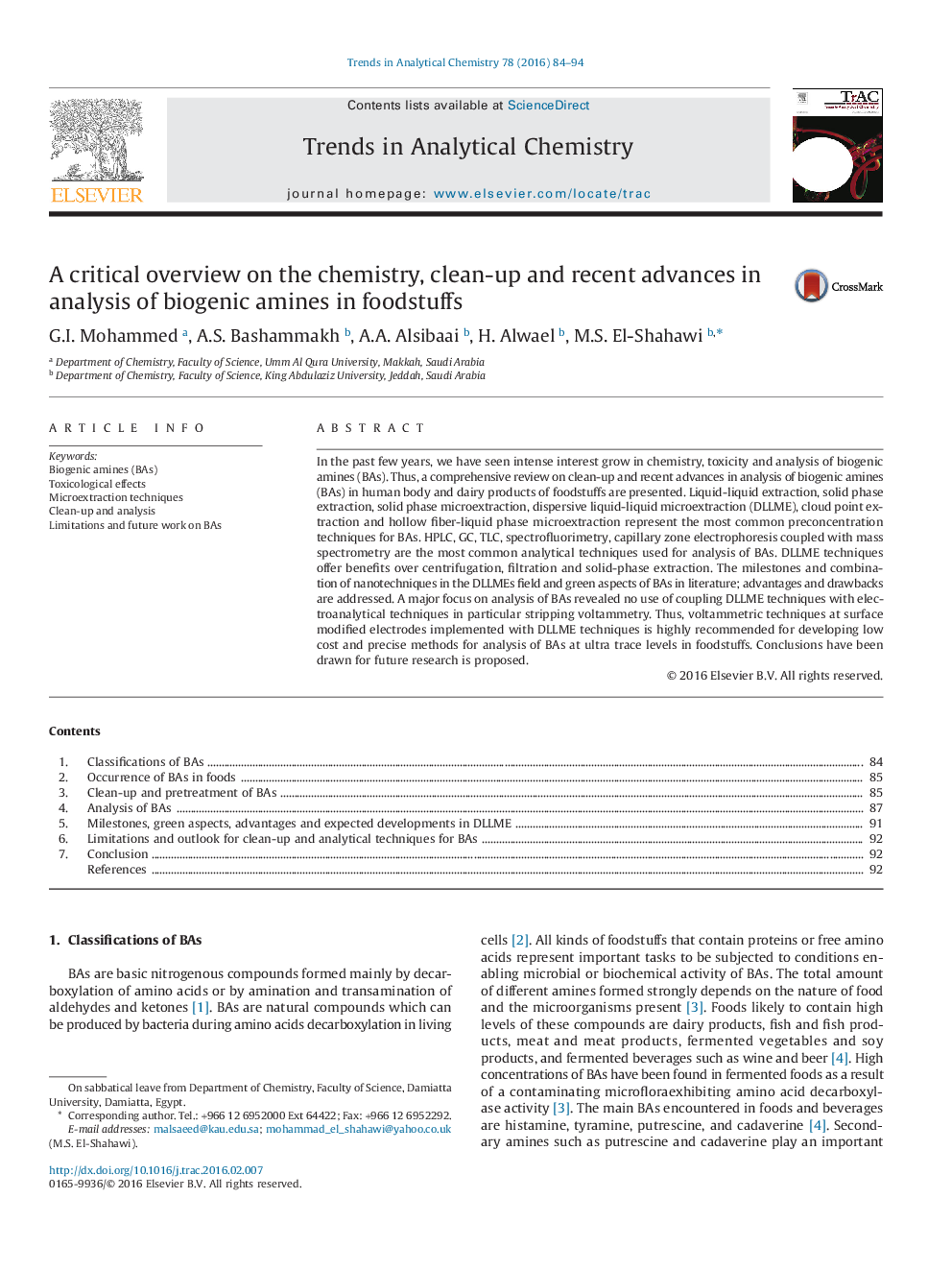| Article ID | Journal | Published Year | Pages | File Type |
|---|---|---|---|---|
| 1249047 | TrAC Trends in Analytical Chemistry | 2016 | 11 Pages |
•A review of 90 references on the clean-up and analytical techniques of BAs is presented.•A proposed pathway for formation and mechanism of BAs is demonstrated.•A brief discussion on the limitations and outlook for clean up and analysis of BAs are demonstrated.•Outlook on the future analytical techniques for analysis of Bas.
In the past few years, we have seen intense interest grow in chemistry, toxicity and analysis of biogenic amines (BAs). Thus, a comprehensive review on clean-up and recent advances in analysis of biogenic amines (BAs) in human body and dairy products of foodstuffs are presented. Liquid-liquid extraction, solid phase extraction, solid phase microextraction, dispersive liquid-liquid microextraction (DLLME), cloud point extraction and hollow fiber-liquid phase microextraction represent the most common preconcentration techniques for BAs. HPLC, GC, TLC, spectrofluorimetry, capillary zone electrophoresis coupled with mass spectrometry are the most common analytical techniques used for analysis of BAs. DLLME techniques offer benefits over centrifugation, filtration and solid-phase extraction. The milestones and combination of nanotechniques in the DLLMEs field and green aspects of BAs in literature; advantages and drawbacks are addressed. A major focus on analysis of BAs revealed no use of coupling DLLME techniques with electroanalytical techniques in particular stripping voltammetry. Thus, voltammetric techniques at surface modified electrodes implemented with DLLME techniques is highly recommended for developing low cost and precise methods for analysis of BAs at ultra trace levels in foodstuffs. Conclusions have been drawn for future research is proposed.
Graphical AbstractFigure optionsDownload full-size imageDownload as PowerPoint slide
